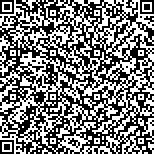|
| 引用本文: | 高 焕,刘 萍,孟宪红,王伟继,孔 杰.中国对虾(Fenneropenaeus chinensis)基因组微卫星特征分析.海洋与湖沼,2004,35(5):424-431. |
| |
|
| |
|
|
| 本文已被:浏览 2052次 下载 2203次 |

码上扫一扫! |
|
|
| 中国对虾(Fenneropenaeus chinensis)基因组微卫星特征分析 |
|
高 焕1,2,3, 刘 萍1, 孟宪红1, 王伟继1, 孔 杰1
|
|
1.中国水产科学研究院黄海水产研究所;2.中国科学院海洋研究所;3.中国科学院研究生院
|
|
| 摘要: |
| 对中国对虾基因组随机测序,获得了总长度约为641000个碱基的基因组DNA序列,从中找到1362个重复序列。其中,两碱基重复类型的重复数目最多(985个),占重复序列总数目的72.32% ;其次是三碱基(149个)和四碱基(102个),分别占重复序列总数目的10.94%和7.49%。另外,六碱基重复34个,单碱基重复50个,五碱基重复5个,分别占重复序列总数目的2.50% 、3.67% 、0.37% 。在单碱基重复类型中,重复拷贝类别为A的重复数目最多;两碱基重复类型中,AT重复数目最多,其次是AC和AG;三碱基重复类型中以AAT重复拷贝类别最多,其次是AAG和ATC;四碱基重复类型中,AGAT重复数目最多;五碱基重复类型只发现了AGAGA、GAGGC、TCTTC和TTTCT四种重复拷贝类别;六碱基重复中以ATTATC重复数目最多。其中一些序列已经提交GeneBank注册,注册号为AY545898-AY545913。中国对虾基因组二碱基重复类型中以不完(Imperfect)形式的微卫星序列为主,其中GC重复拷贝类别的重复数目很少。利用8对微卫星引物对60个个体遗传多样性分析,共获得了60个等位基因,因此认为微卫星技术在中国对虾基因组研究中具有较好的应用前景。 |
| 关键词: 微卫星,中国对虾,基因组 |
| DOI: |
| 分类号: |
| 基金项目:国家重点基础研究发展规划(973)资助项目,G1999012007号;国家高技术研究发展计划(863)资助项目,2003AA603021号 |
| 附件 |
|
| ANALYSIS OF MICROSATELLITE SEQUENCES IN CHINESE SHRIMP FENNEROPENAEUS CHINENSIS GENOME |
|
GAO Huan1,2,3, LIU Ping1, MENG Xian-Hong1, WANG Wei-Ji1, KONG Jie1
|
|
1.Yellow Sea Fisheries Research Institute,Chinese Academy of Fishery Sciences;2.Institute of Oceanology,Chinese Academy of Sciences;3.Graduate School,Chinese Academy of Sciences
|
| Abstract: |
| By sequencing randomly, 3699 clones of sequences in the genome of Fenneropenaeus chinensis were obtained. Then, using software DNASTAR(Version 5.0)to assembly all of the clones, 1520 clones independent of each other, were made in which the length of DNA sequences is about 641,000 bp in total. With the help of the bio-soft Tandem Repeats Finder(Version 2.02), 1362 microsatellite repeat sequences are found in the sequences. Criterions to distinguish the repeat sequences of mono-, di-, tri, tetra-, pentra-, hexanucleotide are that the copy numbers of the motif composed of the mono-, di-, tri, tetra-, pentra-, hexanucleotide are ≥ 14, 7, 5, 4, 3 and 3, respectively. In the 1362 repeat sequences, the numbers of the dinucleotide repeats are 985, and most(72.32%)among all of the repeat sequences; the second are the trinucleotide repeats, 149(10.94%); the third is the tetranucleotide repeats, 102(7. 49%); the forth is the mononucleotide
repeats, 50(3.67%); the fifth is the hexanucleotide repeats, 34(2.50%); the sixth is the petranucleotide repeats, 5(0.37%). Numbers of repeat sequences that composed of the motif of A are 43, accounting for 86% , and most among the mononucleotide repeats. In dinucleotide repeat, the numbers of AT repeats are 418, the most, accounting for 42.44% ; and the second and third are AC and AG repeats, 339(34.42%) and 228(23.15%)respectively. Seven classes of repeat sequences that respectively composed of the motif AAT, AAG, ATC, AGG, AAC, ACT and ACC, are found in the trinucleotide repeats, in which the numbers of AAT repeats are 75, the most; the second are AAG(24); the others are ATC(22), AGG(14), AAC(8), ACT(5)and ACC(1)in turn. AGAT and ATTATC repeats are the most ones in tetranucleotide and hexanucleotide respectively. Both classes and copy number of repeat units are few in pentranucleotide; and there are together four classes: AGAGA, GAGGC, TCTTC and TTTCT. Some of the above sequences are referred to the GeneBank, and the numbers of accession are AY545898—AY545913. The reason of fewer GC dinucleotide repeats are also discussed in the article. Two possible answers are that: one is methylation of C in CpG islands resulting in the mutation of C-T: and another is that it is difficult to sequence the GC repeat sequences.
Distributions of copy numbers in different types of repeat sequences are as follows: copy numbers of mononucleotide repeats are mainly between 20 and 29, accounting for 64%; copy numbers of dinucleotide are mainly between 10 and 29, accounting for 60.71%: copy numbers of trinucleotide repeats are mainly between 5 and 19, accounting for 79.19%; copy numbers of tetre-, pentra-and hexanucleotide repeats together are mainly between 3 and 10. In general, the lengths of microsatellite repeat sequences are mainly between 20 to 60 bp. Among the sequences, the numbers of imperfect sequences are predominance. Based on the above point, it is believed that the nucleotide mutation of microsatellite locations are accumulated largely in a 10ng term of evolution; and there would be abundant polymorphism in these locations. In fact, we get 60 alleles in 8 microsatellite locations, using 8 pairs of microsatellite primers to amplify the genome of 60 individuals by PCR technology. Therefore, it would be very practical to use microsatellite to study the genome of F.chinensis. |
| Key words: Microsatellites, Fenneropenaeus chinensis, Genome |
|
|
|
|
|
